This week’s Throwback Thursday feature from the Australian Aviation archive is this January/February 2017 look at Gate Gourmet’s inflight catering operations by Jordan Chong.
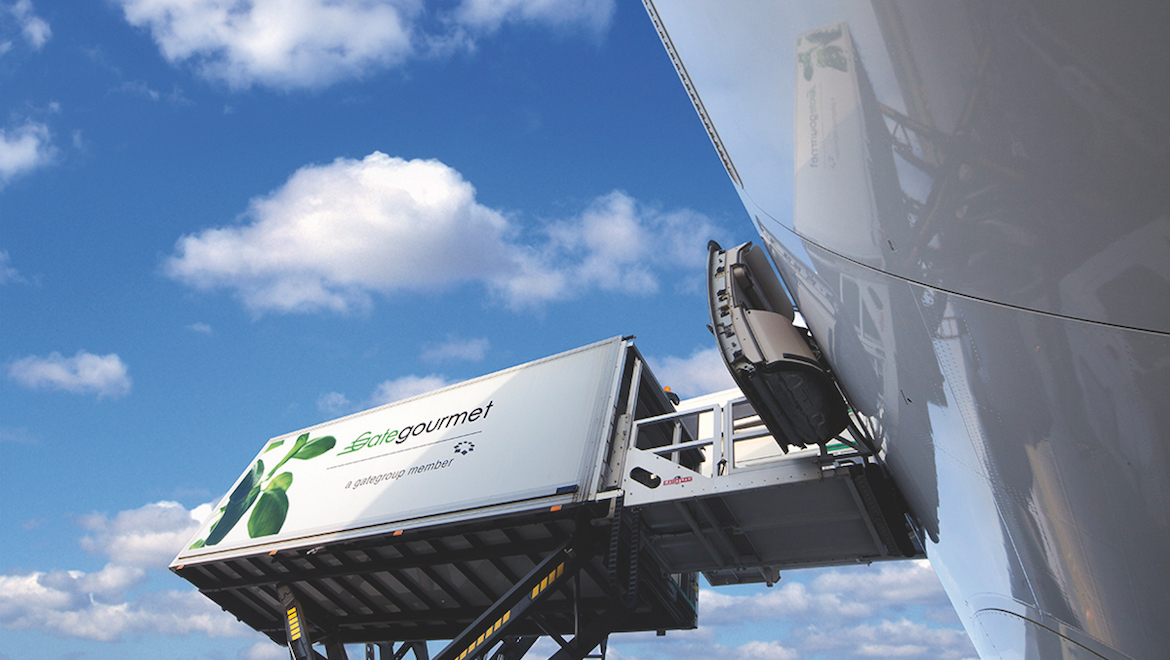
Quick question. Can you remember what you had for dinner a week ago? Try this one. What did you eat on your most recent flight?
The meals we enjoy (or endure depending on your point of view) when travelling through the sky at 35,000ft have always been a major part of the inflight passenger experience.
Everyone has a story to tell. Good (a Japanese bento box lunch that was out-of-this-world fabulous) and bad (a mid-flight noodle dish that someone forgot to heat up).
And the rise and rise of social media, not to mention onboard wi-fi, means the next gastronomic delight or disaster is only a click away from being shared with the world.
That keeps airlines on their toes and helps them check out what the competition is serving up.
As Nik Loukas, the founder of airline food website Inflight Feed explains, airlines have been quick to embrace the likes of Twitter, Instagram and Facebook and use them to their advantage.
“Competitors can easily check out what each other are serving at 35,000ft by simply entering a hashtag on apps such as Instagram,” Loukas explained to Australian Aviation via email.
“I know for a fact that many airlines come to my website to sneak a peek at what other airlines are serving, and many do research into onboard menus also.”
And online reviews appear to really matter for some carriers.
Loukas, an ex-pat Australian now living in Europe, said Dutch carrier Transavia had a quote from his article complimenting its inflight sandwiches featured in the onboard menu for four years.
Also, “Aegean Airlines recently wrote up some comments of mine in their inflight magazine introduction, explaining how I thought their meals were some of the best in Europe.”
“So yes there are certainly airlines who take my comments quite seriously and use them to back up their products, or show that they have a quality inflight product.”
While it is the airlines that accept the bouquets and cop the brickbats, the reality is what is presented to passengers is almost always sourced, cooked and packed by catering companies working under contract.
Gate Gourmet is one of those companies. Australian Aviation recently visited its Australian headquarters in Sydney for a closer look at preparing meals to be served in the sky.

30,000 meals a day
Located alongside Alexandra Canal in Mascot and a short drive to Kingsford Smith Airport, Gate Gourmet services 21 different airlines including the likes of Virgin Australia, Japan Airlines, Cathay Pacific and Singapore Airlines.
Although airlines comprise the vast majority of Gate Gourmet’s business, the company also supplies food for NSW TrainLink and airlines’ premium passenger lounges at Sydney Airport.
The numbers are eye-watering – some 30,000 meals are produced to feed and water passengers on about 200 flights each day in what is a 24-hour, seven days a week operation involving up to 800 staff.
However, the need to supply such large quantities of food does not mean sacrificing quality – the 85 daily truck deliveries have to pass a strict set of conditions in order for the goods such as pasta, fresh beef or Pepe Saya butter to be accepted.
If the trucks are dirty, the food inside is rejected. If cans of crushed tomatoes are dented or scratched, the entire batch is rejected. And if the meat, fruit or vegetables arrive above a certain temperature they are, again, rejected.
“If it’s over five degrees see ya later,” the general manager of Sydney operations for Gate Gourmet Sascha von Wolfersdorf told Australian Aviation during a tour of the facility in early December.
“If you get food poisoning in a restaurant, it’s not good but you spend the night in the bathroom and see your doctor or go to the hospital in the worst case. If you are at 38,000ft, you are not going anywhere. That’s why food safety is so important.”
And the sheer volume of food being produced each day means nothing sits around in storage unused for very long. In Sydney, Gate Gourmet uses 16 pallets of fruit and vegetables in any one 24-hour period, while its team of chefs grill, roast or stir-fry some 7,000kg of protein, excluding seafood, in that time. Fresh yoghurt arrives at the loading dock twice a day.
“You saw the coriander in the chiller, it’s flying tonight,” von Wolfersdorf said.
“You can’t get it fresher anywhere in the world.”
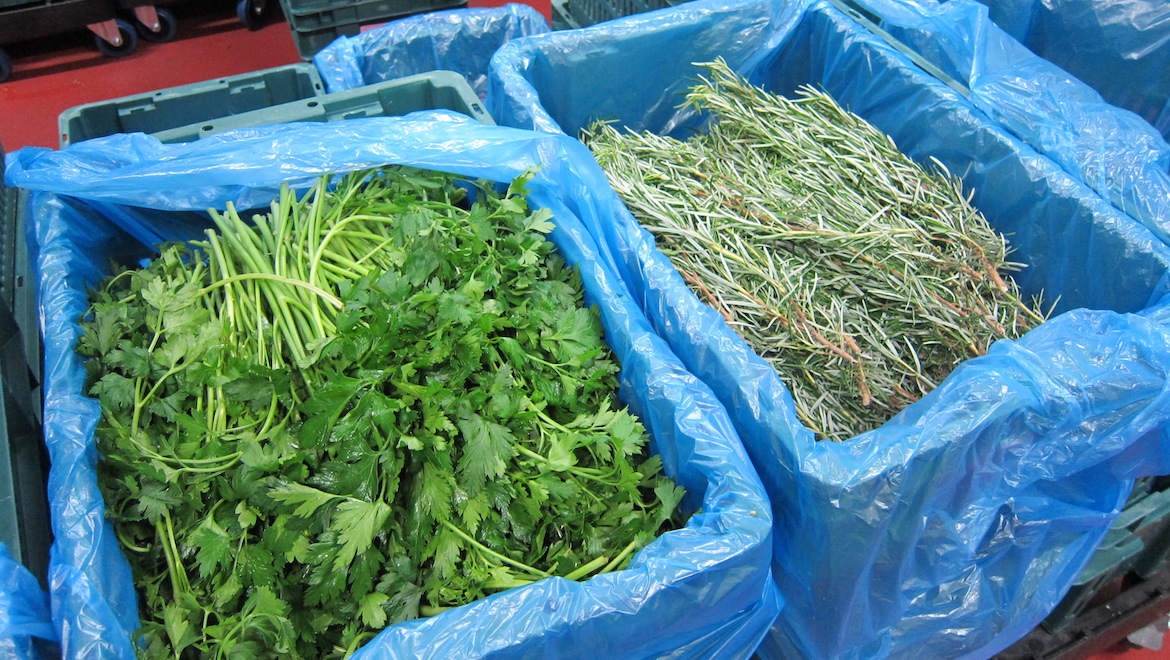
Gate Gourmet’s 90 chefs bring with them a diverse range of skills, meaning the company has the capability to put together menus featuring 46 different types of cuisines, from the traditional Japanese fare seen on Japan Airlines to western meals most likely to be served on Australian or US carriers.
Once the food is cooked, it is placed in large trays and then sent into blast chillers to get the temperature under five degrees Celsius within four hours.
The components are then individually portioned out into those familiar rectangular dishes for economy class, while business and first class meals are put into containers for plating on board using instructions provided by Gate Gourmet chefs.
And the attention to detail is phenomenal. Breakfast omelettes are all made by hand, while roast ducks are skillfully carved and carefully placed on trays. At the same time, staff painstakingly pick garnishes and gorgeously-constructed starters are delicately placed into mini-tubs.
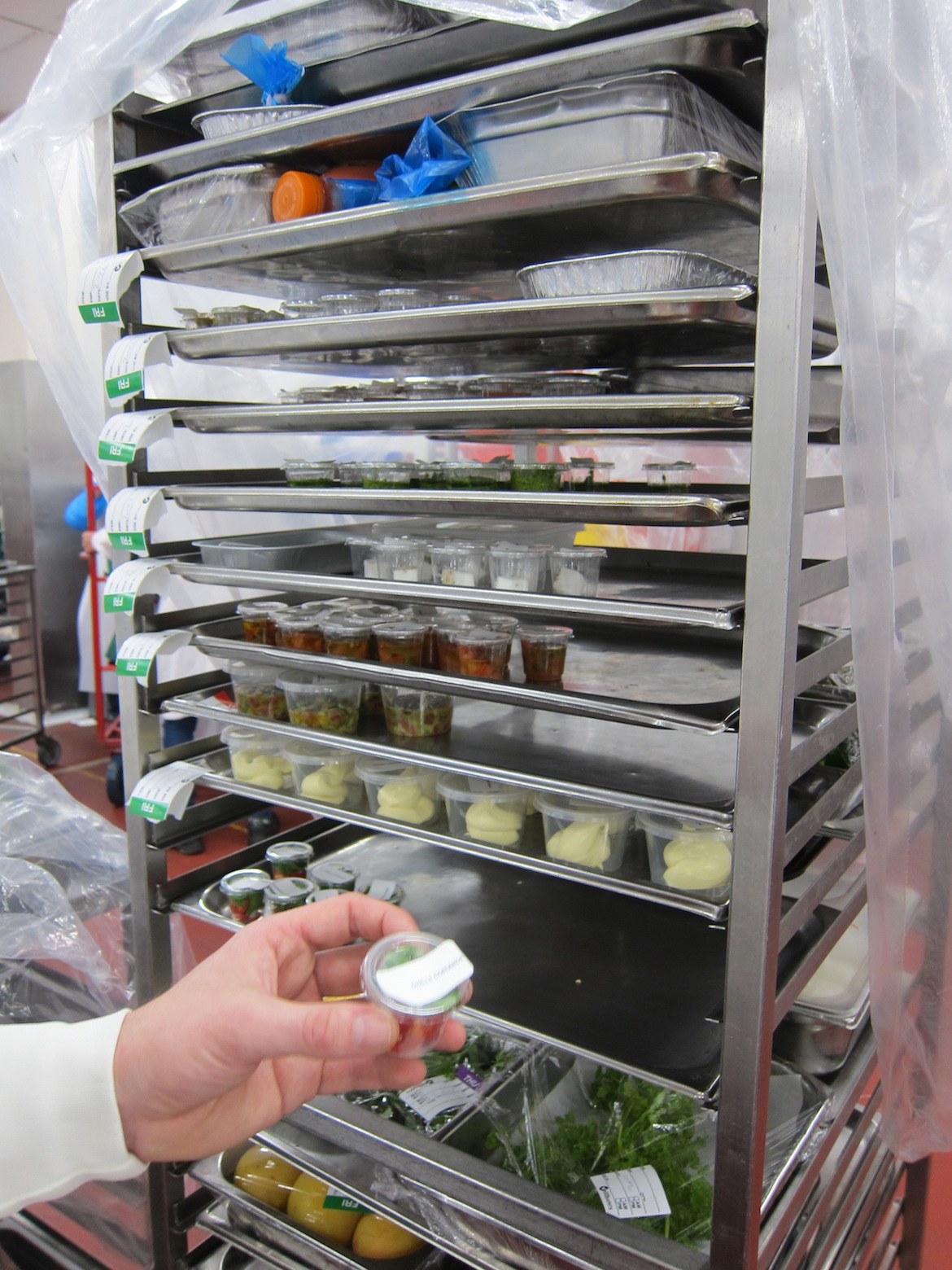
“First class canapés is food art,” von Wolfersdorf said.
Everything is then loaded onto carts and taken into a cool room where they are allowed to stand for four hours. During this “cold soak time”, staff perform one final critical check through the contents of the carts to ensure they have all the components required for the flight ahead.
von Wolfersdorf said it usually takes about 18 hours for carts offloaded from an arriving flight to be cleaned, packed and ready to head out again.
And keeping that turnaround time short helps the airlines’ bottom line, given a cart costs between $800-$1,200 per unit.
“The faster we are, the more efficient we are, the less money the airline has to invest,” he said.
“If I say I can’t do it, you need to give me more equipment, it is a huge cost for the airline with almost no benefit or return.”
Making and packing the food represents just half of the process. The rest of the action takes place after the trucks depart the facility and head airside, where the carts are loaded onto the aircraft.

von Wolfersdorf said Sydney was somewhat unique among its global operations, given it serves so many airline customers.
“What you see today in our Sydney operations is one of the most complex operations in the whole of the gategroup network,” von Wolfersdorf explained.
“Not because of size – we have some massive facilities that do multiple hundreds, even thousands of operations a day, but generally only for one airline. Whereas here we have so many different one-a-day or two-a-day customers, it is much more complex.
“Every airline will have its own equipment, its own menu specifications and its own particular needs. Sydney is truly the most complex in our network in Asia Pacific and in the top few in the gategroup.”
The search for water
At the bar stocking section, there are more than a dozen local and imported brands of water, with 1.5l and 600ml bottles stacked alongside those small 100ml cuplets most often seen in economy.
von Wolfersdorf said water was often one of the hardest items to source as airlines all had their own preferred brand, some of which were not available in Australia and had to be imported by ship.
“I’ve got more water in here than Mount Franklin,” von Wolfersdorf quipped.
“If you think water loading should be the simplest part of this business – unfortunately it’s not.”
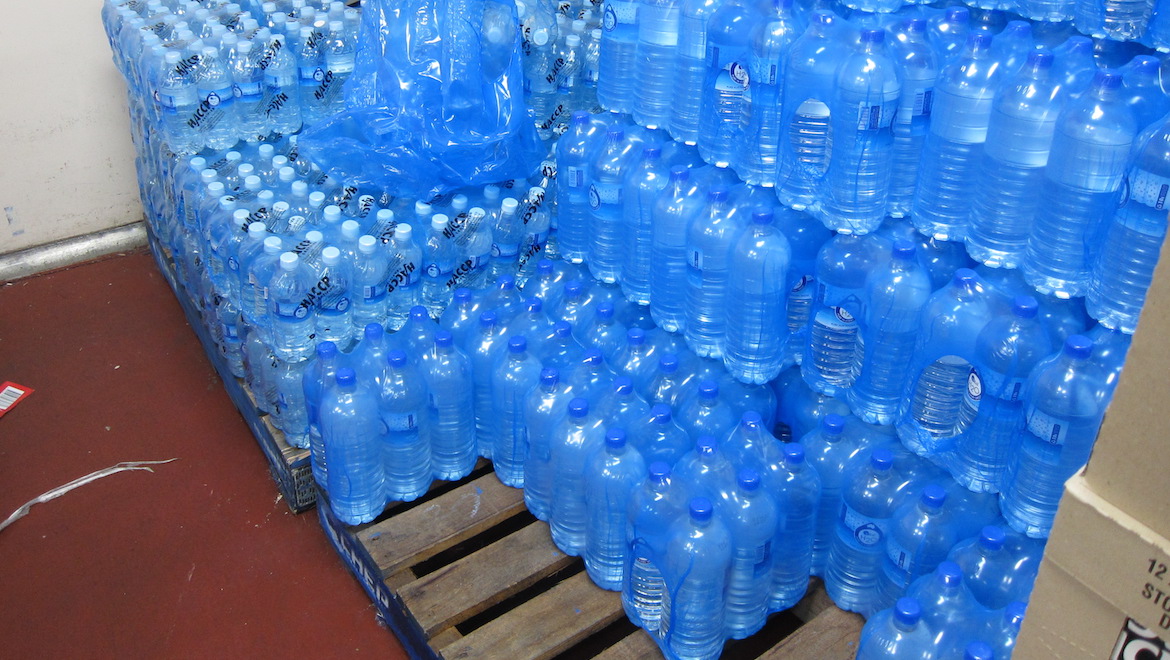
Australian biosecurity rules
Regular international travellers will be familiar with reminders from cabin crew as flights prepare to arrive into Australia not to take any airline food off the aircraft for quarantine reasons.
Well, that leftover food – even unopened packets of biscuits – is removed from the carts once back at Gate Gourmet’s facility and dumped into specially marked yellow quarantine bins.
It is then taken offsite where it is burned by a separate company, as required under Australian law.
While von Wolfersdorf understood the regulations were there for a reason, he described the waste of what was arguably still edible food as a great shame.
“There are some bits and pieces which are arriving here in pretty good condition,” he said.
“A cookie from India, whether it is quarantine or not, if you eat it or if you give it to somebody on the street it wouldn’t kill anyone, it wouldn’t affect the Australian environment. Let’s be serious about it.
“But rules are rules.”
The water used to clean the 3.2 million trays, plates and cutlery cleaned each year by enormous dishwashers that basically never stop running unless being serviced is also subject to biosecurity regulations.
“Quarantine is not just the actual waste of the food, it is also the dishwashing water,” von Wolfersdorf explained.
“This is also classified as quarantine waste so it goes in a completely different system, not where the regular water would go.”
However, on a more positive note, von Wolfersdorf has struck up a partnership with OzHarvest to collect food that is not sold or consumed on board domestic flights and is still fresh.
The charity comes by twice a day to pick up banana bread, muffins and other pre-packaged items to distribute to homeless people, schools and other groups.
The partnership delivered 16 tonnes of food in November.
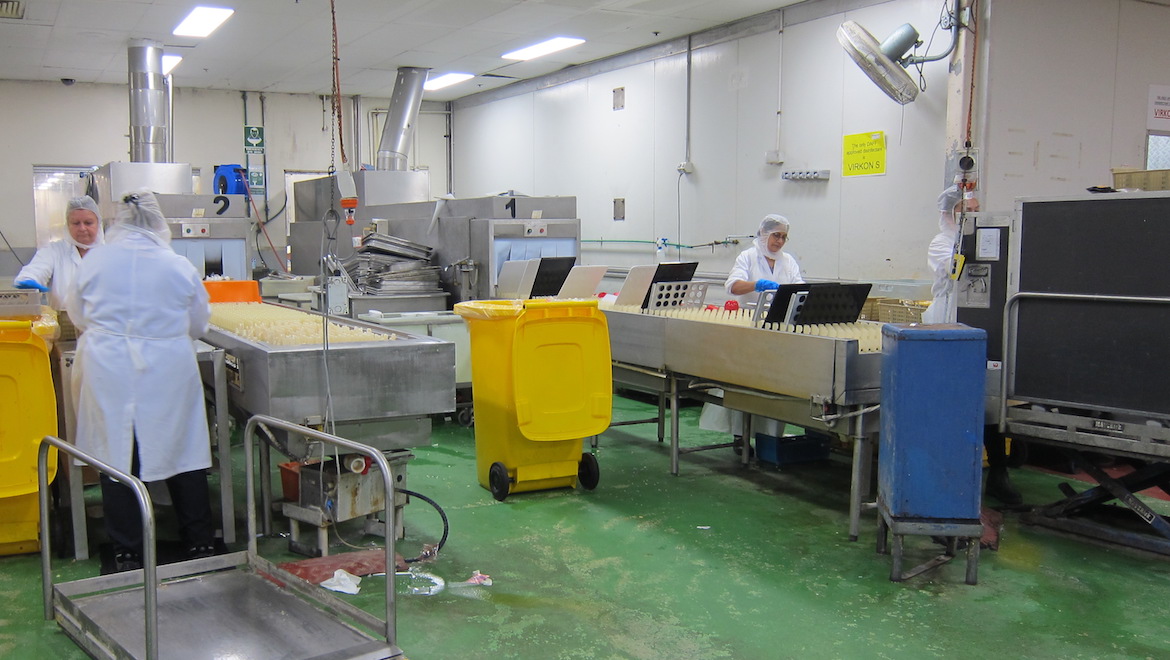
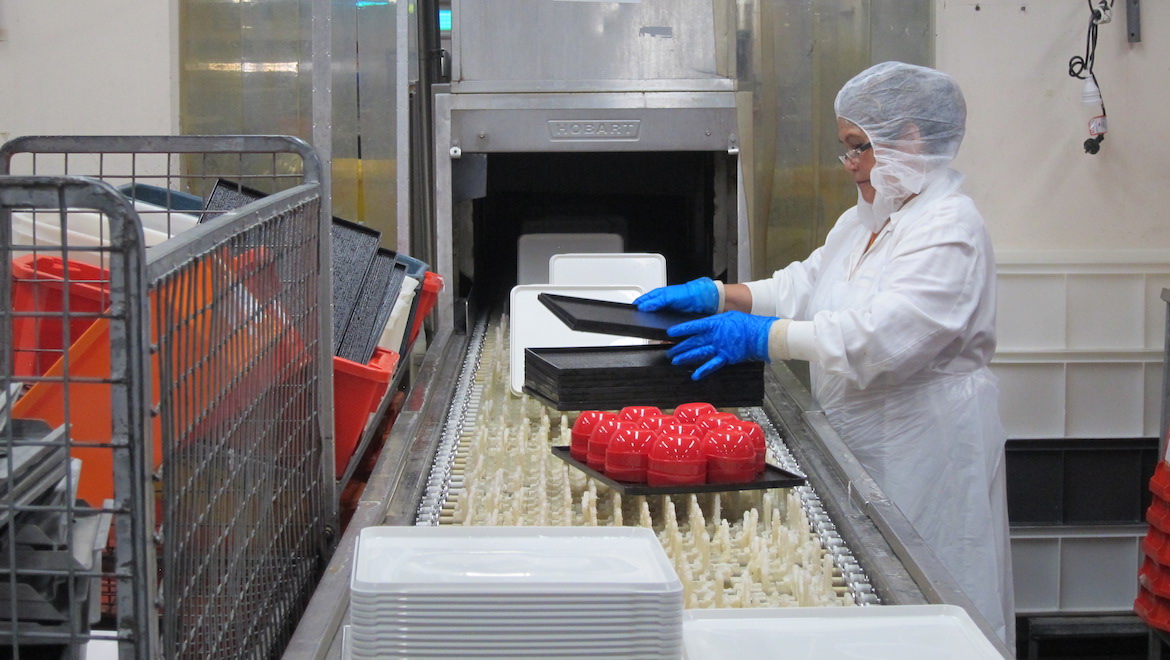
Australian operations growing
Gate Gourmet has a catering presence at airports across Australia and New Zealand including full hot kitchens in Darwin, Cairns, Sydney and Auckland.
The Sydney and Cairns flight kitchens were bought from Qantas’s catering arm Q Catering in 2012.
Recently, the company has opened a new catering facility at Brisbane and Melbourne airports featuring cold kitchens, dishwashing and cartwashing, food portioning, bonded stores, assembly and equipment packing. Both sites will also have full hot kitchens installed in 2017.
von Wolfersdorf said Gate Gourmet’s growth in this country reflected the rise in international carriers flying to Australia.
Moreover, its expansion has also coincided with long-time Gate Gourmet customer Virgin’s move from being a budget carrier in the Virgin Blue days to a full-service carrier rebranded as Virgin Australia.
“We went from being that low-cost carrier provider in most of those operating centres to a full-service provider,” von Wolfersdorf said.
“With the rebranding we then had to go from ‘man-in-a-van’ to proper in-flight catering delivery in trucks.”
von Wolfersdorf is upbeat about the prospects for the catering company in the period ahead amid the growth in inbound tourists and the recent open skies agreement reached between the Australian and Chinese governments, which has removed capacity caps for airlines of both nations.
“We are already seeing an increase in Chinese carriers and on Chinese routes,” he said.
“From our business perspective we see that there’s going to be growth in those international customers.
“We are increasing our capability in order to meet those demands.”
However, Gate Gourmet, like the aviation sector in general, is always susceptible to external shocks.
“When you have global events like a SARS or a bird flu or something like that and the airlines feel the heat then the catering is an easy place to pick off,” von Wolfersdorf said.
“If there is seven or eight items on the tray, you could probably take two or three of those off if that is your decision to remove that cost.
“Our margins are not high. The industry margins are not high.”
Retail becoming a potential nightmare
One of the increasing trends in airline food is giving passengers the ability to pre-order their meal before the flight, from selecting a sandwich when purchasing a Tigerair Australia ticket from Melbourne to Hobart or picking the famous lobster thermidor with Singapore Airlines’ “Book the Cook” option available to business and first class passengers.
While this gives consumers more choice, von Wolfersdorf said it represented an extra challenge for his staff.
“Tiger and Jetstar are pretty big at the moment with pre-ordering, which is really a nightmare for us because you can book your flight now and order a sandwich wrap which I then have to deliver on the aircraft on your flight,” he explained.
“Which basically means I never have a real forecast because I don’t know who is going to fly, who is going to pre-book anything.
“And if you even load it on the aircraft and there is an aircraft change for whatever reason your snack might be on the wrong aircraft.
“Buy-on-board is going to get bigger and bigger in the domestic market but really it is a challenge.”
Not just a catering company
Almost everything needed for a flight has to be packed on a cart, from the pajamas and amenity kits handed out to those at the pointy end of the aircraft to the gloves needed by cabin crew to handle the onboard ovens. Gate Gourmet even packs the newspapers and fresh cut flowers.
It makes the company just as much a logistics and supply chain business as a catering operation.
Moreover, the gategroup companies feature 11 separate operating businesses covering anything from building onboard catering equipment, designing software solutions for inflight sales and conducting aircraft cleaning. There are also companies that specialise in putting together amenity kits and designing aircraft glassware and cutlery.
“We’ve really morphed from being an inflight catering company to now having packaging, design and retail,” von Wolfersdorf said.

Gategroup to become part of HNA Group
In April, HNA Group announced a US$1.5 billion takeover offer for Switzerland-headquartered gategroup, adding the world’s second-largest catering company to a rapidly expanding portfolio of aviation-related assets that also includes a shareholding (and board seat) of Virgin Australia, Hainan Airlines, aircraft leasing company Avalon Holdings and airport luggage handler Swissport.
The transaction was expected to close at the end of 2016.
von Wolfersdorf said it was still too early to notice any impact of the deal.
“But obviously they are looking at our business, how we do things, who we work with, which airlines,” he said.
While there would be some benefits to being part of such a large conglomerate that includes a stable of carriers in China, Australia and elsewhere, the general manager said Gate Gourmet would still have to win tenders on merit.
“Becoming part of something so big, there would be some aligned strategies but I don’t see that giving us a competitive advantage in an open tender,” he said.
“I already know from experience there are no favours. We won’t win the contract if we don’t give the best service at the best price.
“There is much to be said for keeping things within the same group but it is a very competitive environment.”
This article originally appeared in the January/February 2017 magazine edition of Australian Aviation. To read more stories like this, become a member of Australian Aviation here.
















Pat
says:Very nice information and THOROUGHLY recourced